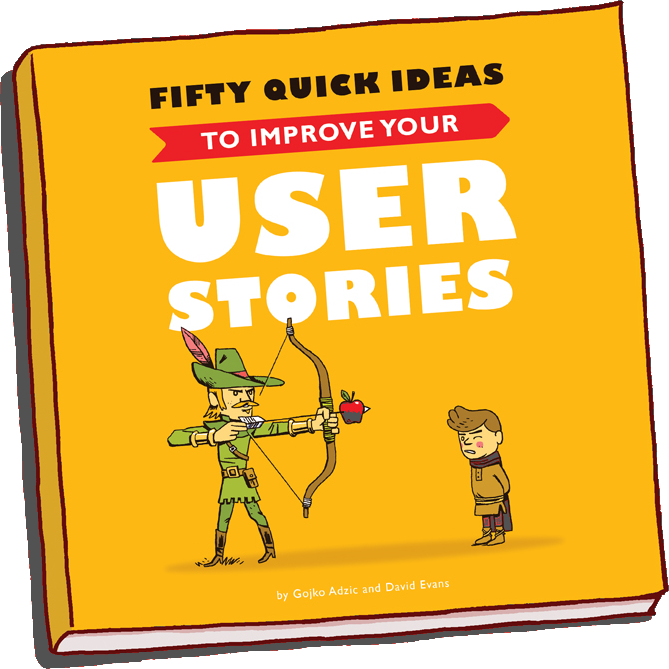Fifty quick ideas to improve your user stories - business-books/ytsearch GitHub Wiki
About the Fifty quick ideas to improve your user stories book
This book will help you write better stories, identify and solve common problems, break down stories to be smaller but valuable, and address complex topics such as cross-cutting issues, long-term effects, and non-functional requirements. Above all, this book will help you achieve the promise of flexible and iterative delivery - ensuring the right things get delivered as a result of productive discussions between delivery team members and stakeholders.

Who is this book for?
This is a book for anyone who works in an iterative delivery environment and plans with user stories. The ideas in this book are useful both to people relatively new to user stories and to those who have worked with them for years. Software distributors, regardless of their role, will find plenty of advice for better stakeholder engagement and better structuring of iterative plans. Stakeholders working with software development teams will learn how to better deliver information to their delivery teams, how to set priorities, and how to stay ahead of the competition by doing more with less software. Who is this book not for?
This book does not cover the basics of storytelling. We assume that readers know what Card-Conversation-Confirmation means, what INVEST is, and how to apply basic strategies to separate user stories. This is not the first user story book you should read if you are unfamiliar with these terms. There are many good basic books, so read them first and then come back later. Please don't hate us because we missed the basics, but there is too much room in the book and other people already cover the basics well enough. What's inside
Unsurprisingly, there are exactly fifty ideas in the book. They are grouped into five main parts:
Creating stories
This part covers gathering information about stories before they enter the delivery process. You'll find ideas on what information to write on story cards and how to quickly spot potential problems.
Planning with stories
This part contains ideas to help you manage the big picture, set milestones, and organize long-term work.
Discussion of stories
User stories are all about effective communication, and this piece contains ideas for enhancing discussions between delivery teams and stakeholders. You will learn how to uncover hidden assumptions and how to facilitate effective communication to ensure shared understanding.
Dividing stories
The ideas in this part will help you tackle large and complex stories by offering various strategies to break them down into smaller parts that will help you learn quickly and deliver value quickly.
Iterative control
Delivery
This part contains ideas to help you work with short and medium term user stories, manage capacity, prioritize and scale down to get the most out of it with the least amount of software.
Each piece contains information that we've used with the teams for the past five to six years to help them better manage user stories and get more value from iterative delivery. These ideas come from a wide variety of contexts, from large investment banks working on internal IT initiatives to small web startups offering consumer software. Software delivery is incredibly contextual, so some stories apply to your situation and others don't. Treat all the suggestions in this book as experiments; try them and if they help, keep doing them. Authors
Goiko Adzic is a strategic software delivery consultant working with ambitious teams to improve the quality of their software products and processes. Goiko won the 2012 Jolt Award for Best Book, he was voted Most Influential Agile Proofing Professional in 2011 by his peers and his blog received the UK Agile Award for Best Online Publication in 2010. To contact us write to gojko @ neuri.com or visit gojko.net.
David Evans is a consultant, coach and trainer specialized in Agile Quality. David helps organizations improve strategic processes and trains teams in effective agile development practices. He is regularly sought after as a lecturer and has published several articles in international magazines. Contact David at [email protected] or follow him on Twitter.